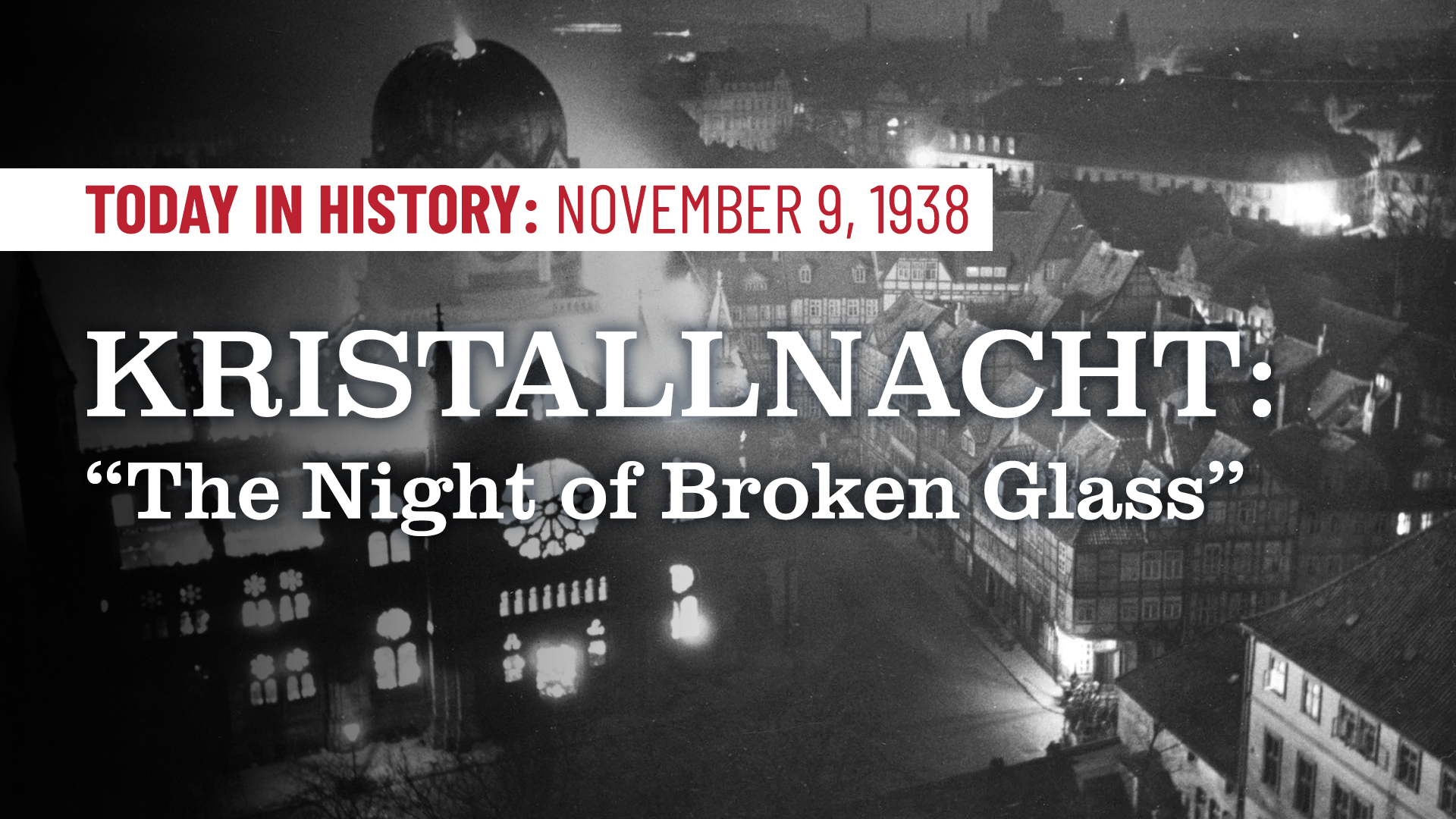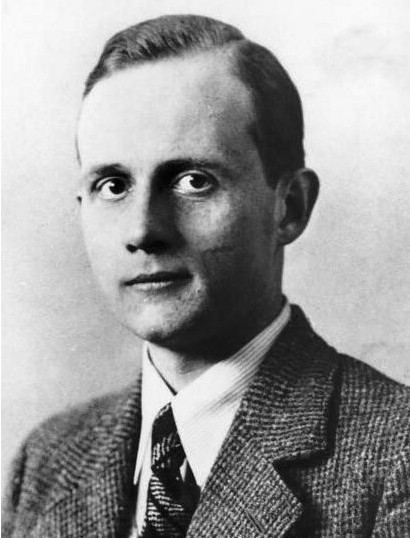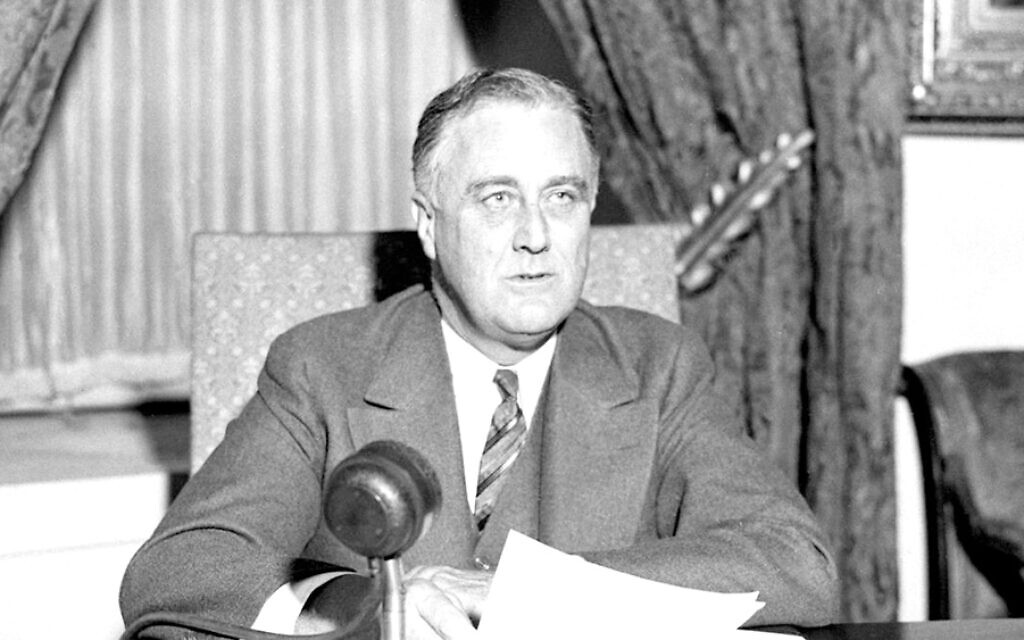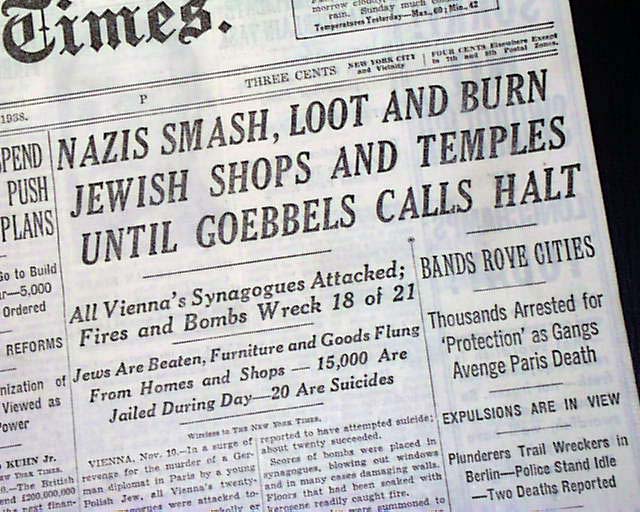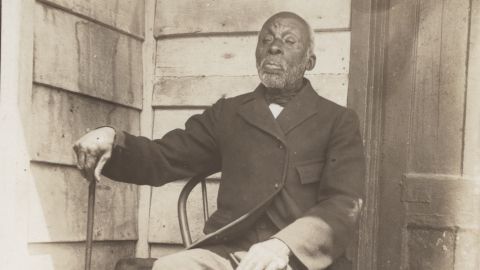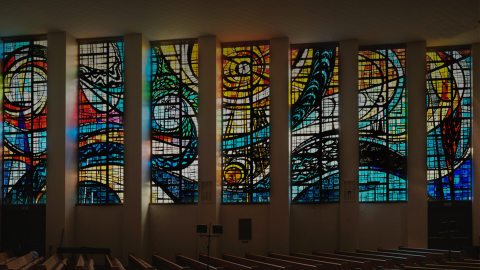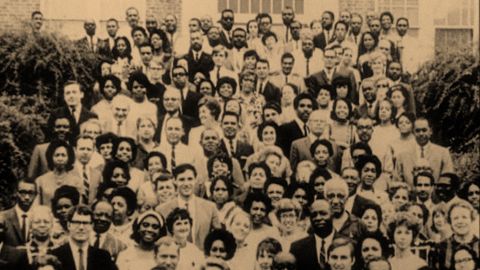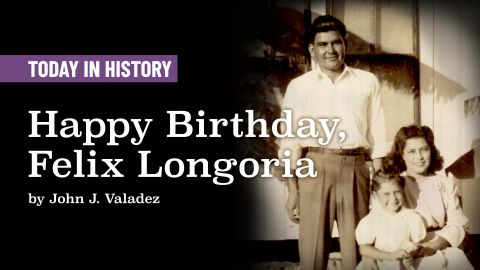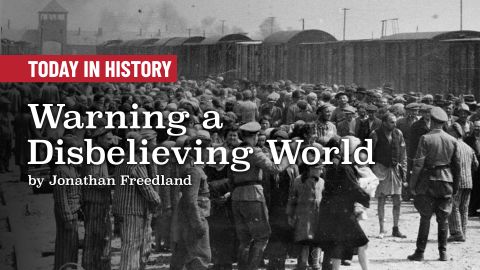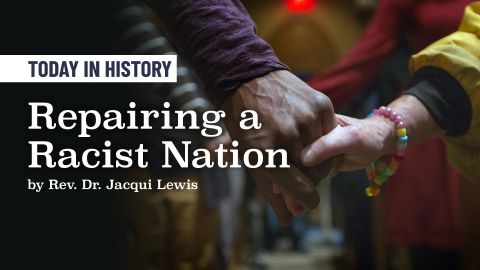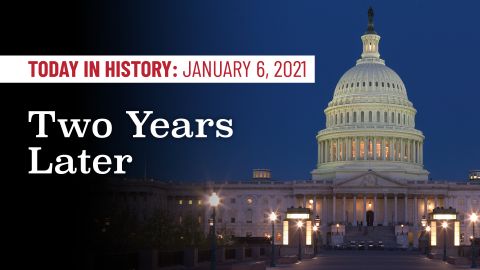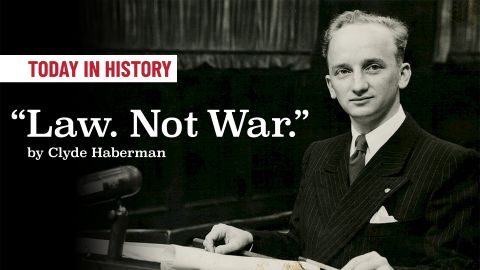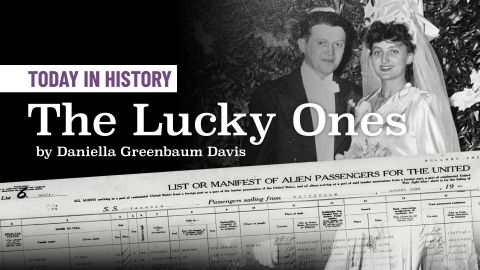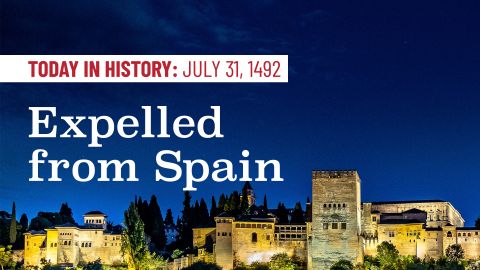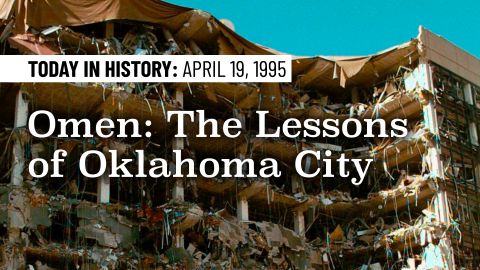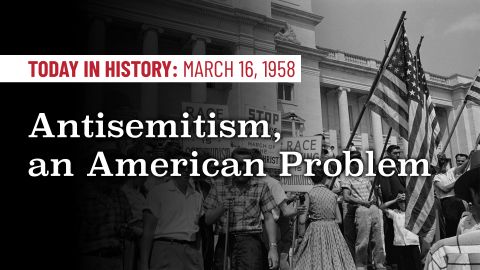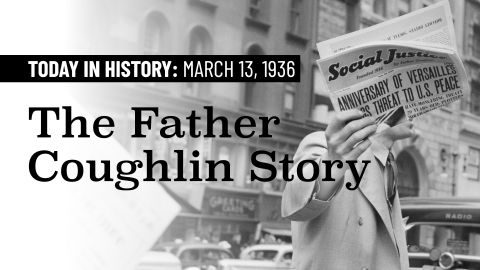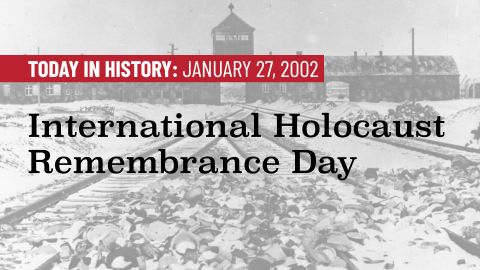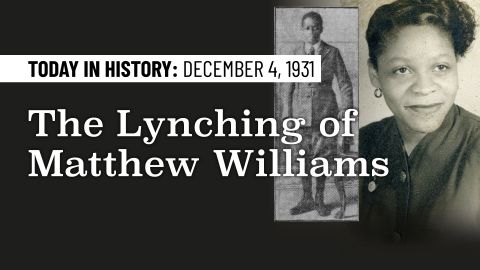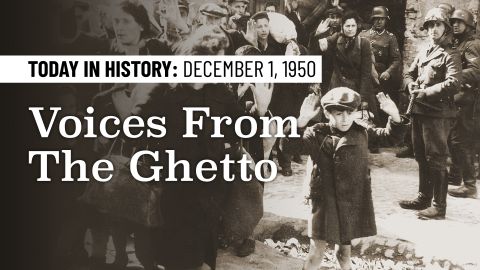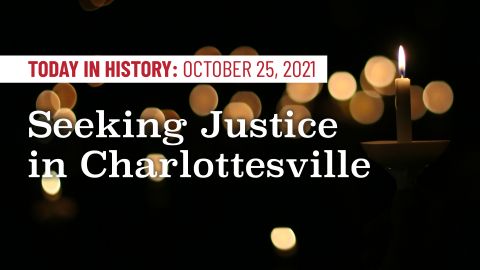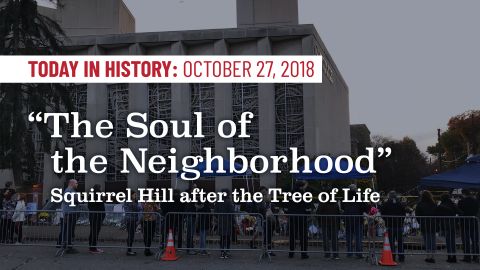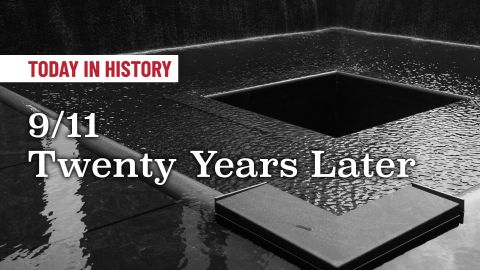Today in History: Kristallnacht — “The Night of Broken Glass”
On the night of November 9, 1938, violent Nazi mobs viciously attacked the Jews and Jewish communities of Germany, Austria, and the Sudetenland region of Czechoslovakia. Leaving behind shattered glass and shattered lives, the event came to be called Kristallnacht, “The Night of Broken Glass.”
For 48 terrifying hours, rioters destroyed hundreds of synagogues, desecrated Jewish cemeteries, ransacked, and looted some 7,500 Jewish businesses. Shards of glass littered the streets. Synagogues burned throughout the night. But police arrested the victims and firefighters were ordered not to intervene.
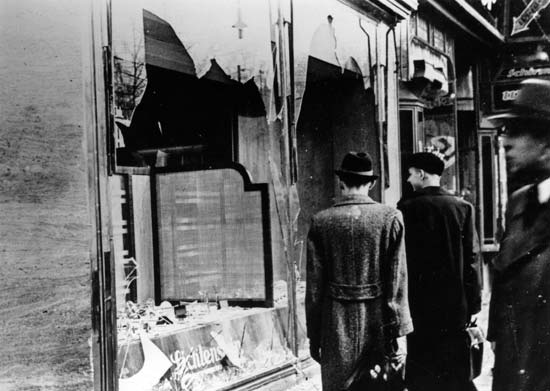
After Kristallnacht: Broken shop windows of German-Jewish business
Although the violence was orchestrated at the highest levels, the Nazis called it a spontaneous reaction to the assassination of a low-level German diplomat in Paris. Two days earlier, Herschel Grynszpan, a 17-year-old Polish Jewish student, shot and killed Ernst vom Rath, a member of the Nazi party. Distraught that his parents had been deported from Germany along with 17,000 Polish-born Jews, Grynszpan hoped his desperate crime would bring attention to the growing persecution of European Jews.
“Being a Jew is not a crime,” Grynszpan said. “I am not a dog. I have a right to live and the Jewish people have a right to exist on earth. Wherever I have been I have been chased like an animal.”
- Herschel Grynszpan
- Ernst vom Rath
The Night of Broken Glass marked a turning point in the Nazi war against the Jews. Nearly 100 Jews were killed during Kristallnacht and 30,000 Jewish men were arrested and sent to concentration camps.
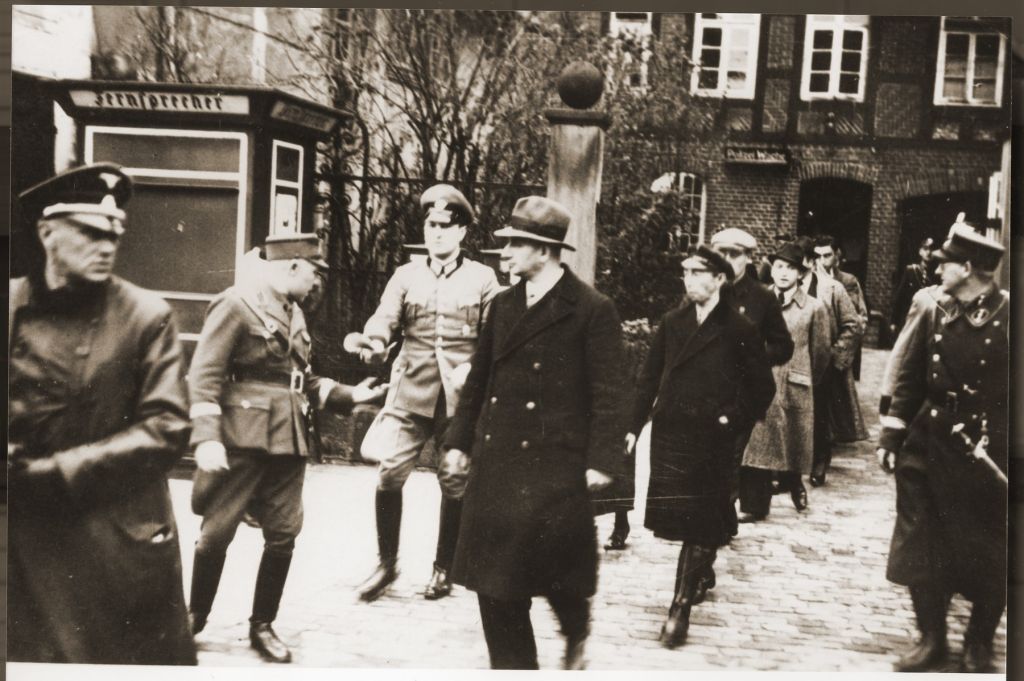
Nazi storm troopers and police rounding up Jewish men in Stadthagen, Germany. November 10, 1938.
Beyond expressing outrage at the violence, the outside world did little to help. On November 15th, President Roosevelt said, “The news of the past few days from Germany has deeply shocked public opinion in the United States… I myself could scarcely believe that such things could occur in a 20th-century civilization.”
But when asked if he would recommend relaxing the country’s strict immigration laws to allow more Jewish refugees into the United States FDR replied, “That is not in contemplation; we have the quota system.”
- President Franklin D. Roosevelt
- The New York Times following the Kristallnacht pogrom of November 9-10, 1938.
Today in History features stories that probe the past and investigate the present to better understand the roots and rise of hate. The views and opinions expressed are those of the author.

